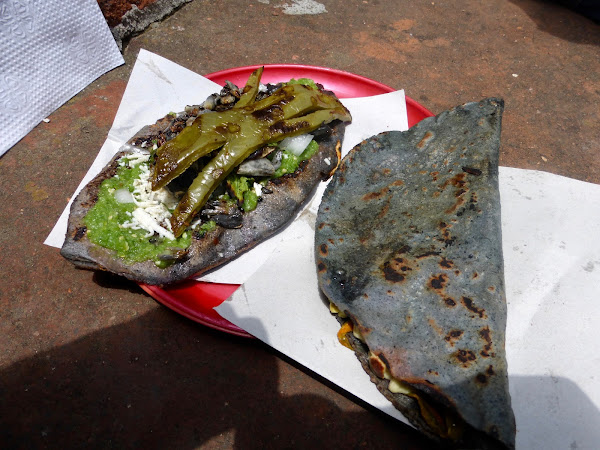Mexico: A Land of Rich Culinary and Cultural Traditions
:
Mexico is a country rich in culinary and cultural traditions, and two of its most emblematic ingredients are purple corn and nopalitos. These foods are not only fundamental to the Mexican diet but also hold deep cultural and nutritional significance. In this blog, we will explore the importance of these ingredients in Mexican cuisine, their health benefits, and their cultural relevance.
Purple Corn: A Nutritional and Cultural Treasure
Purple corn, scientifically known as *Zea mays variety antiqua*, is a variety of corn primarily grown in the Andes and some regions of Mexico. Unlike yellow or white corn, purple corn is distinguished by its vibrant color, which results from the presence of anthocyanins, a type of pigment with antioxidant properties.
Antioxidants: The anthocyanins in purple corn are powerful antioxidants that help combat cellular damage caused by free radicals, which can reduce the risk of chronic diseases such as heart disease and cancer.
Fiber: Purple corn is an excellent source of dietary fiber, which helps improve digestion and maintain gastrointestinal health.
Vitamins and Minerals: This corn is also rich in B vitamins, such as B6 and B9 (folic acid), and essential minerals like iron, zinc, and magnesium.
Culture and Tradition:
In Mexican culture, purple corn is valued not only for its nutritional benefits but also for its cultural significance. It has been a staple in the Mexican diet since pre-Hispanic times. Indigenous peoples of Mexico, such as the Mixtecs and Zapotecs, have cultivated and used this corn in various forms, from tortillas to traditional beverages like purple atole. Its vibrant color also symbolizes cultural richness and a connection to the land.
Nopalitos: Mexico's Edible Cactus
Nopalitos, or nopales, are the young leaves of the *Opuntia* cactus, also known as the nopal cactus. This ingredient is a cornerstone of Mexican cuisine and is used in a variety of dishes, from salads to tacos and stews.
Vitamins and Minerals: Nopalitos are an excellent source of vitamin C, crucial for the immune system, as well as vitamins A and K. They also contain minerals like calcium, potassium, and magnesium.
Fiber and Antioxidants: They are rich in dietary fiber, which contributes to digestive health and blood sugar regulation. Additionally, they contain antioxidants that may help reduce inflammation and the risk of chronic diseases.
Medicinal Properties: In traditional Mexican medicine, nopales have been used to treat various conditions, from digestive problems to diabetes. They are believed to have anti-inflammatory and blood sugar-lowering properties.
Culture and Tradition:
Nopalitos hold a special place in Mexican culture. Their use dates back to pre-Hispanic civilizations, such as the Aztecs, who valued them for their adaptability in arid conditions and their nutritional properties. Today, nopales remain a fundamental ingredient in Mexican cuisine, representing the richness of the country's natural resources and its ability to transform simple ingredients into delicious and nutritious dishes.
For more information, visit:
www.carlotaroa.com
www.spanishtodaytutoring.com




Comments
Post a Comment